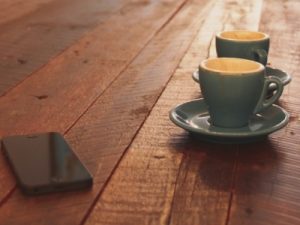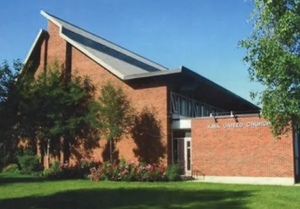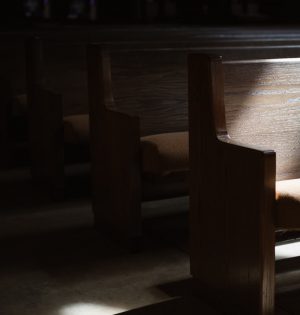 By Don McRae. (Click here for a downloadable pdf of this article: Church Closures and the Loss of Community Social Capital, By Don McRae, March 2023. Also, Read his update from April 2024: “Four Trends in the Creation & Shutdown of Registered Charities in Canada”.)
By Don McRae. (Click here for a downloadable pdf of this article: Church Closures and the Loss of Community Social Capital, By Don McRae, March 2023. Also, Read his update from April 2024: “Four Trends in the Creation & Shutdown of Registered Charities in Canada”.)
The 1950s and early 1960s were the high-water marks for church attendance for major Christian denominations in Canada. The loss of congregants from the mid-1960s onward usually didn’t lead to the closure of churches. Churches continued to hold services as fewer and fewer people sat in the pews. There were some mergers and churches shared ministers or priests but things still chugged along for decades.
Since then, churches started to close. It began as neighbourhoods changed in suburbs, inner city churches became too difficult to attend, and smaller rural communities lost their young people. It continued as congregants aged until there were no people to take over the running and funding of the churches.
As reported by CBC News in 2019, the National Trust of Canada released a sobering statistic, a number buried in a Natural Resources Canada energy audit. There were 27,601 buildings for worship in Canada, and the Trust predicted that we would lose 9,000 of these buildings in the next ten years. While this audit captured buildings of all religions, it is clear from the revocations of charities (see below for details) that the bulk of these will be Christian churches. With the exception of Baha’is Assemblies, which are usually too small to have their own building, the other non-Christian religions in Canada are creating more charities than they are losing.
In 2020, a report entitled No Space For Community was conducted by Faith & Common Good in partnership with several other organizations. The report looked at what would happen to Canadian communities when faith buildings close down and are no longer available to community groups and nonprofits. This two-year study gathered the data of 948 nonprofit and community groups.
Thirty-eight percent of respondents said that they paid nothing for their spaces and others said that they paid minimal amounts. The top five groups using these spaces were arts and culture, sports and recreation, social clubs, education and research and social services such as food banks. A number of churches also have daycares or after-school programs. The convenience of the location is a major factor for these groups. Many of them rely on these low-cost spaces to run their programs leaving them little option if the spaces disappear. The loss of community infrastructure and social capital is clear.
Information from the charity database shows the loss of established Christian churches. Since 2000, 7,171 Christian charities have been registered and 8,036 Christian charities have been revoked for a loss of 865 charities. The data from 2022 shows that 299 Christian Churches were registered as charities while 364 were revoked.
Not to denigrate the newly registered churches, but these charities are not usually from the major denominations. They are stand-alone parishes that either stand or fall on their own. The older revoked charities (United, Anglican, Presbyterian, Catholic, Lutheran, etc.) have support and organization from national and regional offices. These bodies kept churches alive by sharing ministers and priests and providing funds when maintenance costs were too high for congregations. Now, the situation has gotten to the point now where these convening bodies conduct regular parish reviews to see which ones will close. Here are examples:
The Paroisse St-Joseph (registered in 1967, Nash Creek, NB) and Our Lady of the Visitation Parish (registered in 1977, Benjamin River, NB) are two of the Catholic churches closed as part of a reorganization of the Catholic Church in New Brunswick. The Church will go from 58 parishes to 27 in the diocese.
The Christ Church (registered in 1967, Listowel, ON) closed in 2016. It had been part of a six-point pastoral charge in the area. Only one church of the six is still active.
Knox United Church (registered in 1967, Tower Hill, NB) and Lawrence Station United Church (registered in 1967, Lawrence Station, NB) were demolished. They had two and four regular parishioners respectively. Eight churches in the United Church’s St. Croix Presbytery have closed in the last fifteen years and eight remain open.
Loss of Social Capital
 Churches are neighbourhood organizations. They are incubators for volunteering. They minister religious rites like baptisms, confirmations, weddings and funerals. They provide funds for local groups, set up soup kitchens or foodbanks, have childcare or after-school programs, run thrift shops or programs like Out of the Cold. They have a choir, provide Christmas hampers, assist congregants after fires or with other challenges. They provide opportunities for youth like Scouts and Guides. But it is not only the loss of one congregation and its volunteer habitat that’s at stake. This is regularly happening across the country.
Churches are neighbourhood organizations. They are incubators for volunteering. They minister religious rites like baptisms, confirmations, weddings and funerals. They provide funds for local groups, set up soup kitchens or foodbanks, have childcare or after-school programs, run thrift shops or programs like Out of the Cold. They have a choir, provide Christmas hampers, assist congregants after fires or with other challenges. They provide opportunities for youth like Scouts and Guides. But it is not only the loss of one congregation and its volunteer habitat that’s at stake. This is regularly happening across the country.
So far in 2023, 52 churches have lost their charitable status and, again, several of these were well over 100 years old. That’s a critical loss of social capital and volunteering built up over the years with people and across communities.
Case in point, on October 11, 2022, St. Luke’s Anglican Church in downtown Ottawa had a fire. It was quickly brought under control and didn’t affect other parts of the church or the apartments at the back of the church. The congregation had its challenges. Attendance was declining, the building was old and needed maintenance and the neighbourhood was changing. The fire was the last straw and, after 150 years, the congregation voted to close the church. The church, with St. Luke’s Table, provided services to local unsheltered people including meals, a social setting, recreation, laundry facilities, counselling, showers and a welcoming place for a cup of coffee.
Loss of Congregants
 There are a number of factors causing the closure of churches. The first is that Christian congregations are aging out and declining in numbers. The exodus from the churches in the 60s and 70s hollowed out the core, but allowed enough people to stay on and maintain their buildings and their religion. That is no longer the case. The majority of revocations for churches, either in comments on their Public Information Returns or in articles about the closure, mention the lack of congregants. For example:
There are a number of factors causing the closure of churches. The first is that Christian congregations are aging out and declining in numbers. The exodus from the churches in the 60s and 70s hollowed out the core, but allowed enough people to stay on and maintain their buildings and their religion. That is no longer the case. The majority of revocations for churches, either in comments on their Public Information Returns or in articles about the closure, mention the lack of congregants. For example:
The New Castle Creek United Baptist Church (registered in 1967, Newcastle Creek, NB) was three years late on its T3010. The group had decreasing revenue. This quote sums it up: “We hold worship services each Sunday morning, no Sunday school, no children.”
The Lincoln Road United Church (registered in 1967, Windsor, ON) was built in 1915. With low attendance, it had trouble meeting its financial and voluntary obligations. “Unfortunately, there just wasn’t enough of the next generation – and I’m talking about 60 years old – taking the (church director) positions. So, it had to close,” said Ross Milton, chair of the finance and property committee.
The Lone Rock United Church (registered in 1967, Lloydminster, AB) “Because of a declining number of people attending church due to an aging population and people having moved away and a lack of a younger generation to take over, it was decided to discontinue operations.”
The St. James Church (registered in 1967, Hanover, ON) after 168 years of worship closed down. The first service was held in a sod house in 1850. Despite recent renovations to make the church accessible, in the end there were only 17 regular parishioners.
The Honeywood United Church (registered in 1967, Honeywood, ON) closed after 149 years. It had all the problems of a small rural parish. The younger generations had moved away and the seniors who kept going had trouble driving there in winter.
According to a 2019 Angus Reid poll, “The number of Canadians who will attend a religious service for Christmas this year is half of what it was in Angus Reid’s 1995 Christmas survey (26% down from 53%).” In just over one generation, public behaviour changed considerably. Part of the difference in attendance from 1995 to 2019 was that many Canadians in 1995 with strong religious ties had since passed away.
Aging and Deteriorating Buildings
 The church buildings are old and in need of maintenance and repair. The charitable registration system was created in January 1, 1967. As of March 6, 2023, there are over 10,000 churches with 1967 registrations meaning the churches are over 60 years old. As recent revocations have shown, many of the congregations and buildings are more than 100 years old. With a reduced congregation in a large building, maintenance becomes an issue, as was the case at these churches:
The church buildings are old and in need of maintenance and repair. The charitable registration system was created in January 1, 1967. As of March 6, 2023, there are over 10,000 churches with 1967 registrations meaning the churches are over 60 years old. As recent revocations have shown, many of the congregations and buildings are more than 100 years old. With a reduced congregation in a large building, maintenance becomes an issue, as was the case at these churches:
The Central United Church (registered in 1978, Barrie, ON) traced its roots back over 150 years. While the church had a viable congregation, it was built in 1957 when oil was cheap. Retro-fitting would cost between $1.5 to $2 million.
The Knox Presbyterian Church (registered in 1967, Ripley, ON) had about 10 faithful families, but no youth members, and the historic building was a financial burden. It closed in July 2019. The church had been built in 1858 (161 years old).
The Victoria Park Associated Presbyterian Church (registered in 1967, Markham, ON) closed its doors in 2018. While the church building opened in 1953, its history dated back to 1897 when a Sunday school started. It closed because of reduced finances, an aging building and a dwindling and elderly congregation (the youngest members were their 50s).
The Goldboro United Baptist Church (registered in 1967, Goldboro, NS) had two octogenarian parishioners left. The wood church was in disrepair and they didn’t have the finances to continue.
Pandemic Restrictions
 One of the many effects of the pandemic and its related health restrictions was a major shutdown of religious services and many forms of face-to-face interaction. Churches were hit hard by these restrictions, especially given the age of congregants. The lack of religious services, loss of revenue and the financial needs of their buildings accelerated closures. While some churches tried offering virtual services, they were not always accessible to older congregants and this didn’t ease the financial needs of the churches:
One of the many effects of the pandemic and its related health restrictions was a major shutdown of religious services and many forms of face-to-face interaction. Churches were hit hard by these restrictions, especially given the age of congregants. The lack of religious services, loss of revenue and the financial needs of their buildings accelerated closures. While some churches tried offering virtual services, they were not always accessible to older congregants and this didn’t ease the financial needs of the churches:
The Fillmore Pastoral Charge (registered in 1967, Fillmore, SK) had modest revenues, but an increasing deficit. Its last full year was 2020, and its revenues went from $62,000 in 2019 to $4,000 in 2020.
The Immanuel Baptist Church (registered in 1967, Brantford, ON) has relatively stable revenues until 2020, when it was closed due to COVID restrictions. Its last Facebook page was in August 2020 saying that it would be closed until October 2020.
St. James Lutheran Church of Whitecourt (registered in 1980, Whitecourt, AB) sold the church June 1, 2021. They stated they had no choice due to COVID. In 2020, the church was closed for 19 Sundays. Their meager budget went from $33,000 in 2019 to $6,000 in 2021.
Architectural Loss
Churches were built to be the major structure in communities, usually at the centre of the town or city and on the highest ground. They are the architectural heritage and gems in many communities. The loss of these buildings makes every town or city that much poorer.
Due to the loss of especially rural churches, Quebec created a program for the protection, transmission and enhancement of religion-based cultural heritage in 1995 to restore, preserve and repurpose Quebec’s religious heritage. Also, it should be noted that Quebec appears to have been ahead of the rest of Canada in church closures. Research in 2018 using the charity database showed that while Quebec had 37.1% of all Roman Catholic parishes, it had 61.3% of all Roman Catholic church revocations.
Several communities have tried to re-purpose these facilities in order to keep as much of the architectural heritage as possible. This has included creating condominiums or apartments, community hubs, daycares or other uses. T hat said, these buildings are old and not necessarily suited for other purposes. Such ventures take time and money.
hat said, these buildings are old and not necessarily suited for other purposes. Such ventures take time and money.
For example, the Kirk United Church (registered in 1967, Edmonton, AB) had a dwindling congregation and decreasing revenues. The church decided to re-imagine the use of its building to create a community hub known as Kirk Centre. The Centre was home to more than 20 groups and, pre-pandemic, about 450 people a week. It’s still very active. The Kirk Centre has a number of funders, including several religious organizations.
Conclusion
We can’t stop the closure of churches in Canada. The seeds of this demise were planted in the 1960s and 1970s. There are not enough believers left. Succession planning isn’t a solution due to age of the remaining congregants. Mergers of weaker churches allow people to congregate, but the community needs to be rebuilt outside of the former locations.
And this isn’t the only hub of social capital and volunteering that’s weak in Canada. A number of other mainstream charities are facing challenges to their brand in the charitable marketplace. They no longer hold sway as they once did. You can see it in the amalgamation and regional consolidation of these groups. The models of funding, if they even exist, are frayed and subject to the abrupt loss of funding from governments and funders that are scrambling to stay relevant.
We need to have a national conversation to rebuild nodes of volunteering and social capital that welcome all Canadians and create a new vision of how we can create community. This should involve all sectors: charities and nonprofits; governments; and corporations, businesses and unions. This vision needs to take into account reconciliation with Indigenous people, inclusion of newcomers, racialized groups and others that are missing from our current models
Using the results from this discussion, we need to see what’s working, what’s failing and what innovation and new models we can create to increase social capital and volunteering. Our efforts need to be built on including those communities that are too often left behind.
Read Don McRae’s update from April 2024: “Four Trends in the Creation & Shutdown of Registered Charities in Canada.”
Don McRae is an old, left-handed, male, Scottish agnostic with Wesleyan-Methodist grandparents (hence the agnosticism). He’s also a former federal public servant and a longstanding volunteer, consultant, writer and researcher on the charitable sector. He can be found on LinkedIn. Photos are courtesy of Karl Fredrickson, Josh Applegate, Donna Spearman, Bohao Zhao.
Sign up for PANL Perspectives, MPNL’s free newsletter.
Sunday, March 26, 2023 in Don McRae, For homepage, News & Events
Share: Twitter, Facebook




